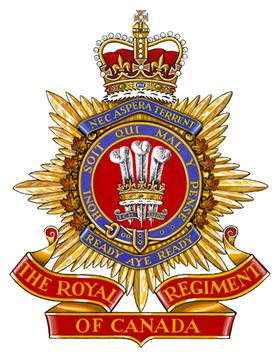
The Royal Regiment of Canada is a Primary Reserve infantry regiment of the Canadian Army. The regiment is based in Toronto, Ontario, and forms part of the 4th Canadian Division's 32 Canadian Brigade Group.

The Royal Hamilton Light Infantry (Wentworth Regiment) (RHLI) is a Primary Reserve infantry regiment of the Canadian Army, based at John Weir Foote VC Armoury in Hamilton, Ontario. The RHLI is part of 31 Canadian Brigade Group, which is part of 4th Canadian Division.
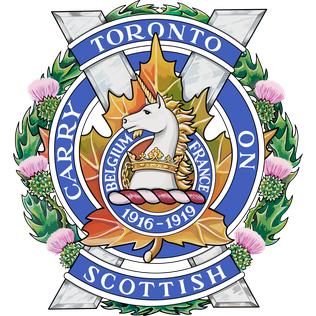
The Toronto Scottish Regiment (Queen Elizabeth The Queen Mother's Own) is a Primary Reserve infantry regiment of the Canadian Army based in Toronto, Ontario, Canada. The regiment was first formed in 1915 as the 75th (Mississauga) Battalion, CEF, and was later reorganized several times before being officially designated as The Toronto Scottish Regiment (Queen Elizabeth The Queen Mother's Own).

The Argyll and Sutherland Highlanders of Canada (Princess Louise's), or A & SH of C, is a Primary Reserve Highland infantry regiment of the Canadian Forces, based at John W. Foote VC Armoury in Hamilton, Ontario.
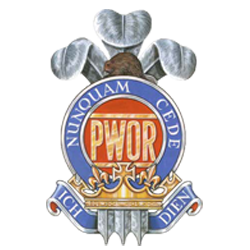
The Princess of Wales' Own Regiment (PWOR) is a Primary Reserve infantry regiment of the Canadian Army.
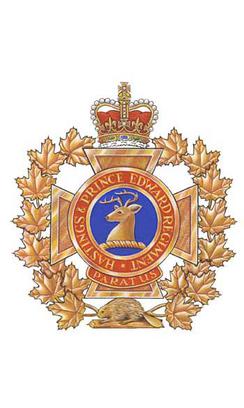
The Hastings and Prince Edward Regiment is a Primary Reserve infantry regiment of the Canadian Army. The regiment is part of 33 Canadian Brigade Group, one of four brigade groups of 4th Canadian Division. The regimental headquarters and one company are at 187 Pinnacle Street in Belleville and on Willmott Street in Cobourg, with another rifle company in Peterborough. The Peterborough Armoury houses what was traditionally B Company or Moro Company. Moro Company also serves as the headquarters for the regiment’s Assault Pioneer Platoon. Normally, the regiment deploys as a composite, Ortona Company, while the headquarters and administration form Somme Company.

The Royal Highland Fusiliers of Canada is a Primary Reserve light infantry regiment of the Canadian Army, with companies in Cambridge and Kitchener, and is an infantry sub-unit of 31 Canadian Brigade Group, headquartered in London, Ontario. The Princess Margaret, Countess of Snowdon and The Prince Andrew, Duke of York, as members of the Canadian Royal Family, acted as Colonel-in-Chief.

The Lorne Scots is a Primary Reserve infantry regiment of the Canadian Army. It is part of the 4th Canadian Division's 32 Canadian Brigade Group.

The Brockville Rifles is a Primary Reserve infantry regiment of the Canadian Army. The unit is a part of the 33 Canadian Brigade Group, 4th Canadian Division. It is fifteenth in the order of precedence of Canadian Army Infantry Regiments.

Stormont, Dundas and Glengarry Highlanders is a Primary Reserve infantry regiment of the Canadian Army. It is part of 33 Canadian Brigade Group, 4th Canadian Division and is headquartered in Cornwall, Ontario.

The North Saskatchewan Regiment is a Primary Reserve infantry regiment of the Canadian Army, headquartered in Saskatoon, Saskatchewan, with companies in Saskatoon and Prince Albert. Its current commanding officer is Lieutenant-Colonel Mike Graver, and the Regimental Sergeant-Major is Chief Warrant Officer Jason Balcaen. The N Sask R is part of the 3rd Canadian Division's 38 Canadian Brigade Group, with the regiment's mission task as of 2024 being to provide direct fire support.
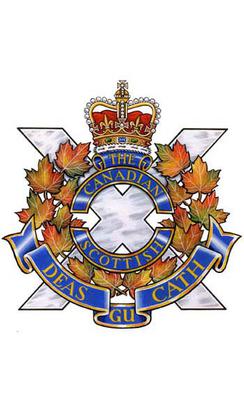
The Canadian Scottish Regiment (Princess Mary's) is a Primary Reserve infantry regiment of the Canadian Army based on Vancouver Island in British Columbia.
The 205th (Tiger) Battalion, CEF was a unit in the Canadian Expeditionary Force during the First World War. Established in late 1915, it was stationed in Hamilton, Ontario and began recruiting toward the end of February 1916. In late 1916, the unit was redesignated a machine gun battalion, but a few months later, in April 1917, the 205th (Tiger) Battalion was broken up for drafts. One company was transferred to the 164th Battalion, CEF, which was recruiting in nearby Halton County. The unit continued to exist as the 205th Machine Gun Depot and then the 205th Machine Gun School.
The 120th Battalion, CEF was a unit in the Canadian Expeditionary Force during the First World War. Based in Hamilton, Ontario, the unit began recruiting in late 1915 in that city and parts of Wentworth County. After sailing to England in August 1916, the battalion was absorbed into the 2nd Reserve Battalion, CEF on January 20, 1917. The 120th Battalion, CEF had one Officer Commanding: Lieut-Col. George Douglas Fearman.
The 129th (Wentworth) Battalion, CEF was a unit in the Canadian Expeditionary Force during the First World War. Based in Dundas, Ontario, the unit began recruiting in late 1915 in Wentworth County. After sailing to England in August 1916, the battalion was absorbed into the 123rd and 124th Battalions, CEF and the 12th Reserve Battalion in October 1916. The 129th (Wentworth) Battalion, CEF had one Officer Commanding: Lieut-Col. W. E. S. Knowles.

The Royal Regina Rifles is a Primary Reserve infantry regiment of the Canadian Army. Prior to 1982 the regiment was known as The Regina Rifle Regiment. The Royal Regina Rifles are part of 3rd Canadian Division's 38 Canadian Brigade Group.

The Irish Regiment of Canada is a Primary Reserve infantry regiment of the Canadian Army based in Sudbury, Ontario. It is part of the 4th Canadian Division's 33 Canadian Brigade Group. Currently one battalion of the regiment exists.
The 56th Field Artillery Regiment, Royal Canadian Artillery is a Canadian Army Reserve artillery regiment based in Brantford, Ontario. The regiment is currently part of 4th Canadian Division's 32 Canadian Brigade Group.

The 95th Battalion, CEF, was an infantry battalion of the Great War Canadian Expeditionary Force. It was formed in December 1915, and trained at Shorncliffe Army Camp in Kent. It did not see combat as an independent unit; its soldiers were used to reinforce other Canadian units in the field in Belgium and France. The 95th was disbanded in July 1917.
The Wentworth Regiment was an infantry regiment of the Non-Permanent Active Militia of the Canadian Militia. In 1936, the regiment was Amalgamated with The Royal Hamilton Light Infantry to form The Royal Hamilton Light Infantry.














